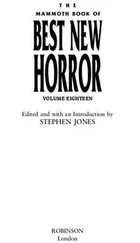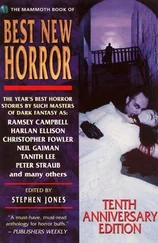Maxim Jakubowski - The Mammoth Book of Best British Mysteries 6
Здесь есть возможность читать онлайн «Maxim Jakubowski - The Mammoth Book of Best British Mysteries 6» весь текст электронной книги совершенно бесплатно (целиком полную версию без сокращений). В некоторых случаях можно слушать аудио, скачать через торрент в формате fb2 и присутствует краткое содержание. Жанр: Детектив, на английском языке. Описание произведения, (предисловие) а так же отзывы посетителей доступны на портале библиотеки ЛибКат.
- Название:The Mammoth Book of Best British Mysteries 6
- Автор:
- Жанр:
- Год:неизвестен
- ISBN:нет данных
- Рейтинг книги:3 / 5. Голосов: 1
-
Избранное:Добавить в избранное
- Отзывы:
-
Ваша оценка:
- 60
- 1
- 2
- 3
- 4
- 5
The Mammoth Book of Best British Mysteries 6: краткое содержание, описание и аннотация
Предлагаем к чтению аннотацию, описание, краткое содержание или предисловие (зависит от того, что написал сам автор книги «The Mammoth Book of Best British Mysteries 6»). Если вы не нашли необходимую информацию о книге — напишите в комментариях, мы постараемся отыскать её.
The Mammoth Book of Best British Mysteries 6 — читать онлайн бесплатно полную книгу (весь текст) целиком
Ниже представлен текст книги, разбитый по страницам. Система сохранения места последней прочитанной страницы, позволяет с удобством читать онлайн бесплатно книгу «The Mammoth Book of Best British Mysteries 6», без необходимости каждый раз заново искать на чём Вы остановились. Поставьте закладку, и сможете в любой момент перейти на страницу, на которой закончили чтение.
Интервал:
Закладка:
Q considers the words carefully, one by one, their residual meaning lingering in the upper reaches of the ceiling for several minutes afterwards…
THE MUMMY by Peter Turnbull
Wednesday
The body was found in the shrubs, next to the towpath, beside the York to Hull canal, out in the country, beyond the suburbs where the landscape is flat, and that year, courtesy of a rainy summer, the foliage was lush, lush enough to partially conceal a human corpse. The body in question was wrapped in a heavy-duty plastic sheeting like a rolled-up carpet and had been laid by the canal side, in long grass. It was found by a jogger. He had noticed it rather than found it. It had first caught his eye on the Saturday as he ran past. It was still there on the Sunday, when families walked the towpath. It was there on the Monday and still there on the Tuesday morning. But on the Tuesday evening the man, the jogger, found his thoughts turning on the length of rubber sheeting. It nagged him with a growing realization that the item in question was just the right length and width to be the grossest form of fly-tipping. The realization stayed with him, hovering in his mind like an annoying fly which by its noise took up a disproportionate amount of space. So that on the Wednesday he set out on his normal morning run taking with him a pair of gloves and ran until he reached the spot where the roll of plastic lay, slowed to a walk, and finally stood over it, and waited until another jogger going in the opposite direction had passed by. It had not been moved or disturbed in any way since he had first seen it: It was clearly his fate to find out if it contained what he feared it contained. The plastic was old, stiff, fragile to the touch. He took the edge of the roll and peeled it back.
He saw a hand. Human. Male, he thought.
He replaced the plastic, slowly, reverentially, and carried on jogging. There was a phone box on his route, and it was the closest phone to that stretch of the canal that he knew. He ran at a steady pace, until he reached the phone box. The box was occupied by a middle-aged lady, chatting excitedly, and the jogger sat on a dry stone wall until the occupant had finished talking, whereupon she replaced the phone and exited the box, holding the door open for him, saying she was sorry and hoped his call wasn’t urgent.
“No urgency at all,” replied the jogger. “No urgency at all.”
But he made it a three nines call nonetheless.
The towpath was cordoned off with blue-and-white tape, white-shirted constables politely but firmly turned back the joggers, the strolling, the anglers, and the just plain curious. The plastic, once unravelled, revealed the body of a small, finely made middle-aged man, the sort of man who in life would attract nicknames such as Shorty or Half-pint. He was dressed in a heavy winter jacket, heavy woollen trousers, and winter shoes. Yet he looked as though he had died only recently.
Detective Inspector Hennessey stood over the body, pondering it with a police officer’s eye for detail. Doctor Louise D’Acre knelt by the body, pondering it with a pathologist’s eye, but also searching for detail. Detail of a different sort. Hennessey sought details to answer his question “Who?” Dr D’Acre sought details to answer her questions “Why?” and “What cause?”
“It’s the first time I’ve ever seen it.” Dr D’Acre stood. She was a slender woman in her late forties, short cropped hair, just a trace of lipstick, a woman who was growing old gracefully. She turned to Hennessey. Their eyes met, briefly, knowingly, then she turned her head away.
“It?” There was a note of warmth in his voice.
“Mummification.” D’Acre looked down at the body. “I’ve read about it, of course. I’m familiar with it, theoretically speaking, but I’ve never come across it…”
“In the flesh?”
“I was trying to avoid using that phrase. But yes, this is the first time I have met mummification. But now I can cross it off my ‘things to do’ list. Explaining the warm clothing… the height of summer. He could have been dead for years.”
“Years?”
“Mummification. No decomposition of the flesh or the features, but inside he’ll be hollow. He’ll be very light to carry. It means that immediately upon death he was placed in an airtight place. No insects to eat up the lovely juicy flesh. The flesh itself became as parchment and as such was of little interest to present-day – this time, this day – insects. But decomposition is beginning, a much slower rate than if he was fresh, but the sooner we get him to York City, the better.”
“So he was placed in an airtight room…”
“Or container.”
“Or container, possibly for years, and then for some reason removed a few days ago and left in a very exposed place. Why?”
“Well that, Inspector, is definitely your department. I, for my part, have to address the question of how? How did he meet his end, before his time?”
“Amstrad” was a Persian. His true given name was obscure even in his native land, which he claimed was and always would be Persia – he having left before, and distancing himself from, the Ayatollah’s rule. In the United Kingdom, the closest his British colleagues came to the accurate pronunciation of his name was that of a British electronics company. So Amstrad he was, though he occasionally remarked that no one, not even his darling English rose of a wife, could pronounce his name like his dear mother had once pronounced it; but he bore the mispronunciation with patience, tolerance, and good humour. He was a diligent man and was so on the day he carefully extracted the garments from their sealed cellophane wrapper, and laid them one by one, side by side, on the surface of the bench, his bench, in Her Majesty’s Forensic Science Laboratory, Wetherby, West Yorkshire. There were undergarments, of the thermal variety, so-called “long johns”, two pairs of socks, a pair of heavy walking shoes, thick woollen trousers, a thick shirt, a pullover, a heavy jacket, fleece lined, all of the size that would fit a small man, or a growing boy. Amstrad Baft was a small man too, but larger than had been the owner of these garments. Bespectacled and white-coated, he began a minute square-inch by square-inch survey, trawling for clues, anything, anything at all which would indicate the recent history of the clothing, or perhaps the cause of death of the wearer.
Finding nothing of note from the normal-vision examination, he made a search of the pockets. All were empty, except the right-hand pocket of the jacket. It contained a till receipt from the Co-op supermarket in the centre of York, timed at 18:06 hours on the 15th day of January – eight years earlier. A man would not keep a till receipt in his jacket pocket for eight years, but it would, reasoned Amstrad Baft, be the sort of thing that wouldn’t be noticed if someone else was rifling through the pockets. He placed the receipt in a cellophane sachet and then began to examine the fibres of the clothes’ under the electron microscope.
Thursday
On the Thursday morning, Chief Inspector Hennessey took two telephone calls which were relevant to the inquiry into the death of “the mummy”, as he had privately come to think of the man found by the canal. The first was from Dr A. Baft of the Forensic Science Laboratory at Wetherby, who gave his first name as something which to Hennessey’s ears sounded like “Amstrad”, but he was unsure and so addressed the caller as “Dr Baft”, as indeed he would have done anyway. Dr Baft informed him that the clothing was clean and of high quality, indicating a man of substance, though perhaps short of stature. The clothing seemed old, of earlier fashion, but had not deteriorated, and Dr Baft advanced that it had been preserved in some way.
Читать дальшеИнтервал:
Закладка:
Похожие книги на «The Mammoth Book of Best British Mysteries 6»
Представляем Вашему вниманию похожие книги на «The Mammoth Book of Best British Mysteries 6» списком для выбора. Мы отобрали схожую по названию и смыслу литературу в надежде предоставить читателям больше вариантов отыскать новые, интересные, ещё непрочитанные произведения.
Обсуждение, отзывы о книге «The Mammoth Book of Best British Mysteries 6» и просто собственные мнения читателей. Оставьте ваши комментарии, напишите, что Вы думаете о произведении, его смысле или главных героях. Укажите что конкретно понравилось, а что нет, и почему Вы так считаете.











